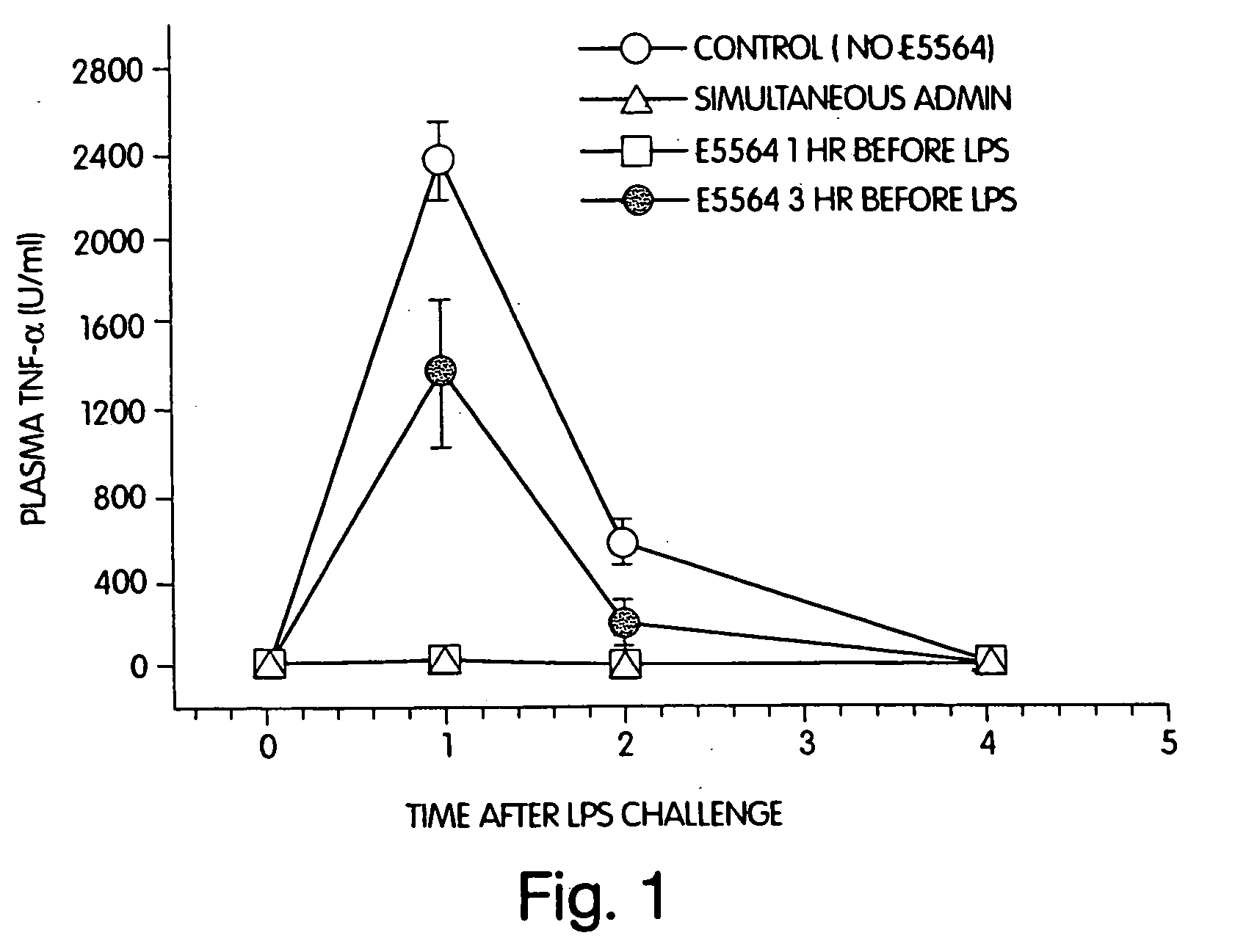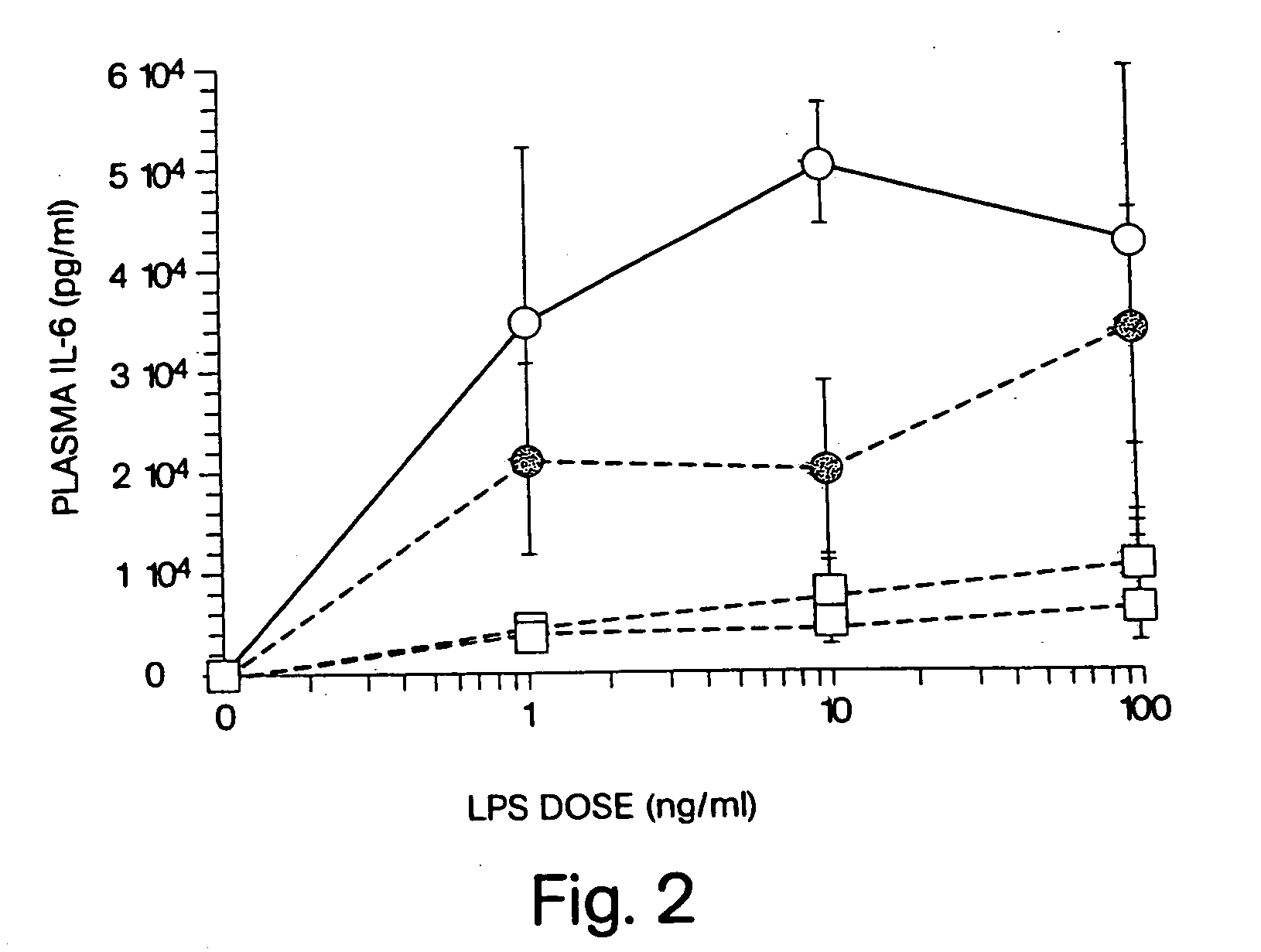Use of an anti-endotoxin drug in the prevention and treatment of disease
a technology of endotoxin and anti-endotoxin, which is applied in the direction of biocide, animal husbandry, carbohydrate active ingredients, etc., can solve the problems of increasing the occurrence of sepsis and septic shock, increasing the toxicity of icu therapy for septic shock, and increasing the toxicity of icu therapy, etc., and achieves the effect of shortening the pharmacodynamic half-life of the drug
- Summary
- Abstract
- Description
- Claims
- Application Information
AI Technical Summary
Benefits of technology
Problems solved by technology
Method used
Image
Examples
Embodiment Construction
[0021] We have discovered that administration of E5564 by continuous infusion over a relatively long period of time overcomes the short pharmacodynamic half-life of the drug, which has been observed even though E5564 demonstrates a long pharmacokinetic half-life in circulation in the blood. The methods of the invention, as well as experimental data related to these methods, are described further, as follows.
[0022] The methods of the invention can be used to prevent or treat endotoxemia and related conditions and disorders (e.g., sepsis) in humans. For example, the methods can be used in conjunction with any type of surgery or medical procedure that could lead to the occurrence of endotoxemia or related complications (e.g., sepsis syndrome). For example, the methods of the invention can be used in conjunction with cardiac surgery (e.g., coronary artery bypass graft, cardiopulmonary bypass, or valve replacement), transplantation (of, e.g., liver, heart, kidney, lung, or bone marrow),...
PUM
| Property | Measurement | Unit |
|---|---|---|
| structure | aaaaa | aaaaa |
| body weight | aaaaa | aaaaa |
| antibiotic resistance | aaaaa | aaaaa |
Abstract
Description
Claims
Application Information
 Login to View More
Login to View More - R&D
- Intellectual Property
- Life Sciences
- Materials
- Tech Scout
- Unparalleled Data Quality
- Higher Quality Content
- 60% Fewer Hallucinations
Browse by: Latest US Patents, China's latest patents, Technical Efficacy Thesaurus, Application Domain, Technology Topic, Popular Technical Reports.
© 2025 PatSnap. All rights reserved.Legal|Privacy policy|Modern Slavery Act Transparency Statement|Sitemap|About US| Contact US: help@patsnap.com



